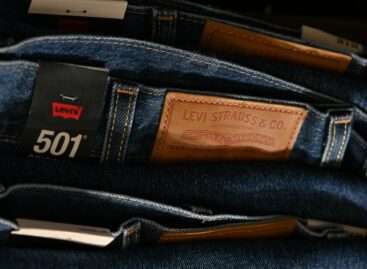Budapest could be the region’s creative industry capital by 2030
The economic potential of the creative industry is now not only a cultural issue, but also a competitiveness issue. The goal of the Hungarian Fashion & Design Agency (MDDÜ) is to make Budapest the leading fashion and creative industry center in Central Europe by 2030 – CEO Zsófia Jakab spoke to Index about this, as well as about the strategic development directions and the state’s role.
Creative industry: more than aesthetics
 For many, fashion and design still evoke the world of catwalks, magazines and luxury. Yet these areas represent serious economic and social value: the creative industry now accounts for nearly 3 percent of Hungarian GDP, and on a global level, it could account for up to 10 percent of the world economy by 2030. According to the CEO of MDDÜ, this sector has long been treated according to its strategic importance by the world’s successful economies – including France, South Korea and the United States.
For many, fashion and design still evoke the world of catwalks, magazines and luxury. Yet these areas represent serious economic and social value: the creative industry now accounts for nearly 3 percent of Hungarian GDP, and on a global level, it could account for up to 10 percent of the world economy by 2030. According to the CEO of MDDÜ, this sector has long been treated according to its strategic importance by the world’s successful economies – including France, South Korea and the United States.
State involvement: not a luxury, but a tool for competitiveness
The question arises: why is state coordination necessary in this area? According to Zsófia Jakab, the answer is clear: “The creative industry is the second fastest growing economic sector in Hungary, so its strategic development is not only a cultural but also an economic necessity.” MDDÜ does not operate as a profit-oriented organization, but as a professional coordinator, which is not a competitor, but a partner of domestic designers, manufacturers and brands.
In the case of the agency, non-profit operation also means a commitment to value: their goal is to support developments that serve the public interest in the long term and represent high added value. Their operation is transparent in all aspects: they prepare professional and financial reports annually.
A strategy based on four pillars
The activities of MDDÜ operate in line with the objectives of the Hungarian Competitiveness Strategy 2024–2030. They develop the domestic fashion and design sector along the four strategic pillars defined at the time of its foundation – domestic stability, export promotion, education development and production development.
A key goal is to ensure that Hungarian consumers increasingly choose products from domestic designers, and that Hungarian clothes, furniture, and home furnishings appear on international shelves. To this end, it is essential to strengthen the prestige of manufacturing and industry-specific skills, as well as to spread entrepreneurial knowledge among creative actors.
Related news
Made by Indira encourages ethical consumption
🎧 Hallgasd a cikket: Lejátszás Szünet Folytatás Leállítás Nyelv: Auto…
Read more >Levi Strauss’ quarterly profit jumps
🎧 Hallgasd a cikket: Lejátszás Szünet Folytatás Leállítás Nyelv: Auto…
Read more >Nike’s quarterly profit falls 30 percent
🎧 Hallgasd a cikket: Lejátszás Szünet Folytatás Leállítás Nyelv: Auto…
Read more >Related news
Christmas shock in commerce: for the first time, we can pay with bank cards in fewer places
🎧 Hallgasd a cikket: Lejátszás Szünet Folytatás Leállítás Nyelv: Auto…
Read more >Hungarian Confectionery Manufacturers Association: trends in 2025 and prospects for 2026
🎧 Hallgasd a cikket: Lejátszás Szünet Folytatás Leállítás Nyelv: Auto…
Read more >Most grocery chains will be open until noon on December 24th
🎧 Hallgasd a cikket: Lejátszás Szünet Folytatás Leállítás Nyelv: Auto…
Read more >






